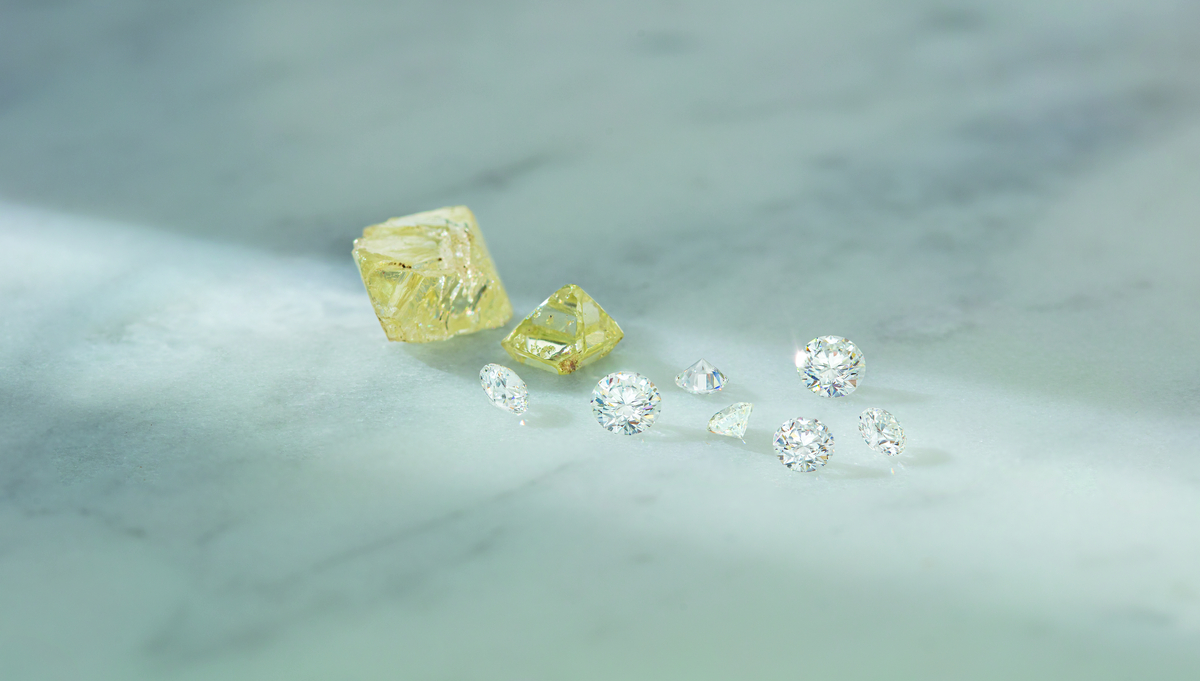How Lab-Grown Diamonds Empower Ethical Consumers

In recent years, the rise of lab grown diamonds has significantly shifted the jewelry market, providing a sustainable and ethical alternative to mined diamonds. Traditional diamond mining, with its environmental damage and often exploitative labor practices, has been a cause of concern for many consumers who value ethical production processes. As environmental sustainability and human rights issues gain increasing importance, lab grown diamonds have become a powerful tool for ethical consumers to make informed, conscientious choices.
Environmental Benefits of Lab Grown Diamonds
One of the primary concerns surrounding traditional diamond mining is its severe impact on the environment. Mining involves extensive land degradation, deforestation, and disruption of ecosystems, often leading to long-term environmental damage. The process of extracting diamonds also uses significant amounts of water and energy, contributing to the depletion of local natural resources. Furthermore, mining operations can lead to water and soil pollution through the use of toxic chemicals such as cyanide and mercury.
Lab grown diamonds, in contrast, are created in controlled laboratory environments using renewable energy sources and a fraction of the resources required for traditional mining. The two common methods of creating lab-grown diamonds—High Pressure High Temperature (HPHT) and Chemical Vapor Deposition (CVD)—emit far less carbon dioxide and consume less water compared to mining. By opting for lab grown diamonds, consumers can significantly reduce their carbon footprint, making them an appealing choice for those who are environmentally conscious.
Ethical Labor Practices in Lab-Grown Diamond Production
Another compelling reason why lab grown diamonds are empowering ethical consumers is the labor practices involved in their production. Traditional diamond mining has long been associated with human rights violations, including child labor, unsafe working conditions, and exploitation of workers in regions with weak labor laws. The term “blood diamonds” has been used to describe diamonds that are mined in war zones, often funding violence and conflict.
Lab-grown diamonds, however, are free from these ethical concerns. Since they are produced in controlled, regulated environments, they are not associated with the labor abuses that are prevalent in some diamond mining regions. The transparency in the supply chain for lab grown diamonds allows consumers to feel confident that their purchase has not contributed to human suffering or conflict. This ethical aspect is a major draw for consumers who seek to make responsible choices in all aspects of their lives.
Affordability of Lab Grown Diamonds
While the ethical and environmental benefits are important, another key factor that empowers consumers is the affordability of lab grown diamonds. Traditional diamonds, due to the scarcity and intensive mining processes involved in their production, come with a premium price tag. This often makes them inaccessible for many consumers or forces them to make trade-offs in terms of quality or size.
Lab grown diamonds are typically 20-40% less expensive than their mined counterparts, offering the same physical properties and aesthetic appeal but at a more affordable price. This price advantage allows consumers to choose higher-quality diamonds or to purchase larger stones within the same budget. The cost-effectiveness of lab grown diamonds also means that individuals can direct their savings toward other ethical endeavors, such as sustainable fashion or charitable giving.
Traceability and Transparency in the Lab-Grown Diamond Industry
The ability to trace a diamond’s origins is an increasingly important factor for ethical consumers. Many traditional diamond mines lack transparency, making it difficult for consumers to know whether their diamonds were sourced responsibly. The introduction of the Kimberley Process in the early 2000s was designed to prevent the trade of conflict diamonds, but the effectiveness of this system has been questioned, as it does not address environmental or labor concerns comprehensively.
Lab-grown diamonds, on the other hand, offer full traceability. Consumers can easily access detailed information about how the diamonds were created, the energy sources used, and the working conditions of the facilities. This transparency empowers consumers to make informed decisions, knowing that their purchases align with their ethical values.
Changing Consumer Mindsets and the Future of the Jewelry Industry
The growing demand for lab-grown diamonds signals a shift in consumer mindsets. Ethical consumers are increasingly prioritizing sustainability and social responsibility when making purchasing decisions. Lab grown diamonds represent a paradigm shift in how consumers view luxury items, moving from an era where traditional diamonds were prized for their rarity and status to a future where ethical considerations play a central role in the decision-making process.
As the technology behind lab grown diamonds continues to advance, it is expected that their popularity will only increase. The jewelry industry is already responding to this shift, with major brands incorporating lab grown diamonds into their collections and promoting their ethical benefits. In the coming years, lab grown diamonds may not only represent an ethical choice but also become the standard in the jewelry market, further empowering consumers to make positive contributions to the planet and society.
Conclusion
Lab grown diamonds are more than just a trend—they are a transformative force in the jewelry industry, offering ethical consumers a way to align their values with their purchases. With their environmental benefits, ethical labor practices, affordability, and transparency, lab grown diamonds empower consumers to make conscious choices that support a sustainable and fair future. As the demand for ethical products continues to rise, lab-grown diamonds are helping to reshape the jewelry market into one that is more responsible and aligned with the values of today’s consumers.


